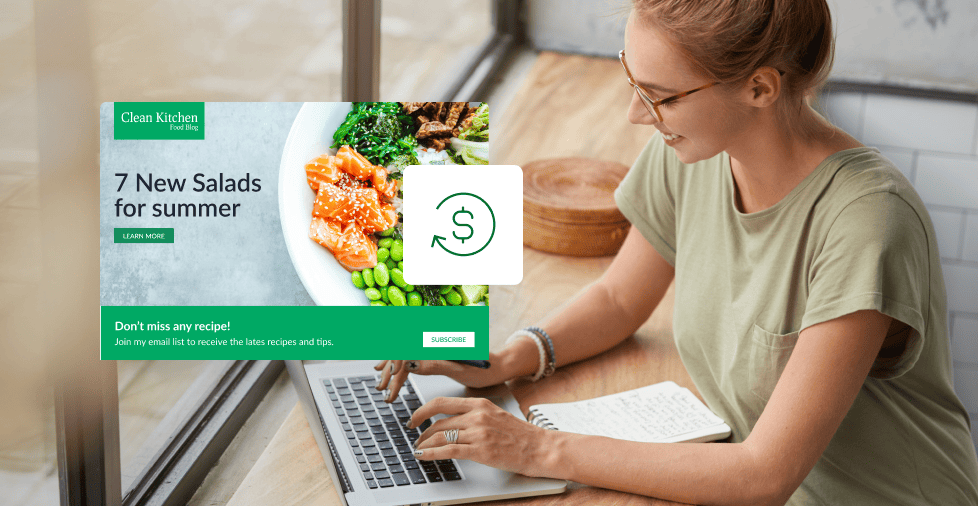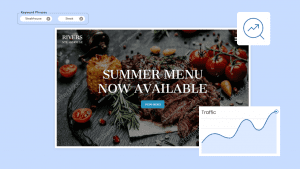Key takeaways:
- Choose a profitable niche. While you should be passionate about your topic, focus on areas like personal finance and digital marketing for the most direct path to monetization.
- Monetize early. Start with simple methods like affiliate marketing or display ads to see what works best for your blog and audience.
- Diversify your income. Once you’re confident in your brand, try adding 2-3 different monetization strategies to see what works best.
Ever dreamed of turning your passion for writing into a full-time job? If so, you’re on the right track. Jumping the gun isn’t the answer. Many beginner bloggers, driven by the same ambition, often quit before they start earning because they lack guidance and persistence.
Just building a blog takes a lot of work. Making money from it requires even more patience, a solid strategy, and the right mindset.
We can help you shape that. Stick with us as we uncover everything you need to know about how to make money blogging. With this guide, you can craft a monetization strategy that aligns with your goals and start seeing results.
How to make money blogging: 11 actionable steps
Here are the steps to earn money from blogging, from getting started to turning your website into a growing business:
- Choose a profitable niche
- Create quality blog content
- Build your reputation as blogger and industry expert
- Build your email list
- Sell advertising space
- Go into affiliate marketing
- Create sponsored content
- Create and sell digital products
- Offer paid subscriptions
- Sell services online
- Sell physical products
These strategies range from more passive income sources to more hands-on, higher income generating methods. You don’t have to tackle them all at once, but if you plan to explore them all, this is the best order to follow.
Step 1. Choose a profitable niche
Not all passions are profitable. It’s important to find a sweet spot between what you love and what people are willing to pay for.
To make money, you need to create content your potential clients are actually looking for. Kick things off by exploring some of the most profitable blog niches out there.
- Business and marketing
- Finance
- Health
- Fashion
- DIY and crafts
- Food and nutrition
- Lifestyle
Once you’ve found one that sparks your interest, dig a little deeper. Ask yourself:
- “What do I know a lot about in this area?”
- “Am I ready to invest my time and money into this?”
- “Which of these am I qualified to talk about?”
Even with free blogging platforms, you’ll still need to cover costs for hosting and your domain. Creating great content also requires an investment. It takes money to do research, learn new skills, and explore fresh ideas.
If you can, focus on a topic you already have expertise on. While you can write about anything you set your mind to, having established credentials and a strong reputation makes it easier to become a trusted source of information online.
Step 2. Create quality blog content
Readers visit blogs because they’re looking for information, entertainment, or a way to pass the time–not to make a purchase.
As a result, bloggers often make money online indirectly by introducing products or services in a way that feels natural within the content. To truly monetize your blog, you’ll need to create compelling content that readers trust and find valuable enough to share or act on.
The more traffic you build, the better your chances of earning money. To consistently attract readers, you should:
- Choose the right topics. Stay updated on industry’s trends and focus on evergreen topics in your niche. This way, you’ll always have something to write about. The more ideas you have, the easier it is to build a content calendar that keeps your blog fresh.
- Use catchy headers. Your headers are the first thing readers notice. Make them catchy yet clear. This way, even if readers skim your articles, they’ll get the gist of the topic and think of your blog as a good source of information.
- Provide value. Create content that solves a problem, answers a question, or entertains in a way that leaves the reader feeling fulfilled.
- Balance quality and quantity. The more blogs you have, the more content your readers can explore. So, create a good number of blogs consistently. Don’t neglect quality though. It’s better to post less frequently with in-depth content than to post too often with shallow articles.
- Practice search engine optimization (SEO). Always aim to put your content at the top of search results pages. This increases the chances of your blogs being seen. Use SEO tools like Google Keyword Planner, SEMrush, and Ahrefs to create keyword-rich content. Add meta data and check the mobile friendliness of your pages too.
- Mind your keyword usage. Don’t fall into the trap of overstuffing your content with keywords. Instead, focus on writing for the reader while using keywords strategically to improve search engine visibility.
Step 3. Build your reputation as a blogger and industry expert
Readers are much more likely to be invested in your blog if they see you as an expert in your field. This is all about how you present yourself and your brand online.
Interestingly, we’re talking about perceived expertise, not necessarily actual expertise. While you absolutely need credentials for highly specialized fields like medicine, science, and law, you just need to show up and build an authoritative presence in most other industries. This is exactly how many influencers become trusted sources of information for their followers.
Here’s how you can do the same:
Build a social media strategy
Boost your blog’s social presence by creating a separate blogging business account for it. While sharing blog links on your personal social media is fine, a dedicated business account allows you to build a community around your content.
This way, your readers have an outlet where they can engage with one another, and you can share sneak peeks or host activities relevant to your content.
Write guest blogs
Guest blogging is a great way to promote yourself and your voice. When you’re invited to write for reputable sites, like popular blogs or news outlets, it tells others that these “big shots” trust your opinion and that you’re worth looking into.
To be invited, you’ll need to build a reputation for yourself. But a good pitch works too. Instead of waiting, reach out to publications sites that accept guest posting. Here are a few:
- Mashable
- Smashing Magazine
- CopyBlogger
- Entrepreneur.com
- New York Times Op-Ed Section
- Inc.com
- Business Insider
- Forbes Opinion Section
Add your own YouTube videos and podcasts into your blog content
Blogs are no longer restricted to just written content. You can now embed videos and audio to complement your writing.
Even if the core content is the same, giving readers alternative ways to consume your material adds variety and makes them far less likely to leave your blog page. Hearing your voice also helps set a better tone for when they return to reading your blogs.
Step 4. Build your email list
Email marketing is one of the most powerful tool bloggers can use to gather more traffic to their blog pages. It helps you connect directly with loyal readers and add a more personal touch that social media sharing simply cannot.
Before you can start marketing, you’ll first need to establish a solid email list. Here are a few ways you can do that:
- Create lead magnets like freebies or sneak peeks into a portion of your content in exchange for an email address.
- Put opt-in forms strategically on your blog. Make sure this doesn’t hinder your audience’s reading progress.
- Offer free downloadable content, like an eBook or a checklist.
- Encourage readers to subscribe to your newsletter in blogs themselves. Just be careful not to overdo it.
Step 5. Sell advertising space
Selling advertising space is one of the fastest and most passive ways bloggers can start earning money online. All you have to do is sign up for a service, decide where to place the ads, and start earning from “ad impressions”, which means you get paid based on how many people see your ads.
There are two main ways to approach display advertising:
- Sign up with an ad network like Google AdSense
- Negotiate with companies directly
The latter takes more work but helps you cover products that you yourself use or that are closely relevant to your niche.
While ad networks aim to provide relevant ad content too, their libraries are limited, so brands often end up with repetitive ads. This is why most bloggers don’t use this monetization strategy anymore. Consumers are no longer drawn to ad placements and often view them as spam too.
Still for those who just started blogging display advertising is a great start.
Step 6. Go into affiliate marketing
Affiliate marketing lets you earn commissions for every sale made through your blog. It’s a lot like display advertising, but instead of flashy ads, you use a special affiliate link.
So many bloggers prefer affiliate marketing because it gives them control over how they promote products while maintaining their brand’s image.
Getting started is easy:
- Join an affiliate program.
- Grab your special affiliate link.
- Incorporate it into your content.
When readers click and make a purchase, you earn a commission.
Commission rates vary by brand and product type. An Amazon affiliate link offers 1-5% for most types, while luxury beauty products can give you 10%, and a Shopify affiliates link provides $150 for referred subscriptions.
Other popular affiliate programs include:
- CJ Affiliate. Connect with top brands and earn commissions.
- ShareASale. Partner with brands across various sectors.
- Amazon Associates. Promote products on Amazon and earn up to 10%.
- Clickbank. Explore eCommerce tools and a global affiliate marketplace.
Affiliate marketing is a great way to earn passive income. But remember, only promote products you’ve personally used and trust. Always disclose your affiliate links to keep things transparent and follow Federal Trade Commission (FTC) guidelines.
Step 7. Create sponsored content
Sponsored content, or “brand collaborations,” involves promoting or reviewing a brand’s products. While it shares a similar concept with affiliate marketing, these are two distinct monetization strategies.
The difference lies in their payment structure: affiliates earn commissions based on sales, while bloggers receive a flat rate for sponsored posts, regardless of how many sales are made. To make sure they turn a profit, companies usually offer sponsorships to bloggers with a larger readership, where the potential for sales is higher.
Making money from sponsored content is hard for new bloggers, but it’s not off the table. If you’re still starting you can reach out to brands offering sponsorships. Just make sure you genuinely like the product and can promote it authentically.
When adding sponsored content to your blog, always disclose the sponsorship. You also need to use the “no follow” tag on sponsored links to comply with Google’s rules. Google penalizes sites that don’t use this tag, as it wants search rankings based on merit, not paid links.
Step 8. Create and sell digital products
Creating and selling your own digital products is a great way to monetize your blog. Your readers are already invested in your content, which means they might be interested in paying for higher-quality or more in-depth information on the same topic.
You can package your expertise into products like:
- Online courses. This monetization option is best for bloggers with a solid and decent following. Since they have already established themselves as a trusted source, their readers are highly open to paying for more in-depth information.
- Workbooks. These are great for bloggers with educational or informational blogs. Their readers often like to apply the knowledge they’ve gained, and workbooks are a great way to help them keep track of their progress.
- Printables. Printables (e.g., checklists, templates, and calendars) are great tools for bloggers with a solid marketing structure and branding. They can be used to help readers connect more effectively with your voice and content.
- Webinars and memberships. Offering access to recorded and live content is a great way to create exclusivity and build a sense of community.
- eBooks. This digital product takes the most time to create and is best for bloggers who have a lot of in-depth information to share on a single, comprehensive topic. The tricky thing about this is that it might limit what you put into your own blog posts.
While it can take a lot of time and effort to create these products, the payoff is high. Just be sure that what you’re creating is something your audience truly wants.
Step 9. Offer paid subscriptions
Offering paid subscriptions is a profitable monetization strategy when the content you create aligns with your readers’ personal values. After all, 80% of global consumers prefer to buy from bloggers who support causes they care about.
If you create blog posts on controversial or stirring topics like politics, environmental issues, or social justice, then this is perfect for you.
Just make sure you don’t block out all your content though. Leave some blogs completely free to view and give a preview for juicier content. This allows you to build trust and show readers that you’re a reliable source before you ask them to subscribe.
Medium does this by showing a popup that encourages readers to subscribe to a paid membership to get full access to interesting blog topics.
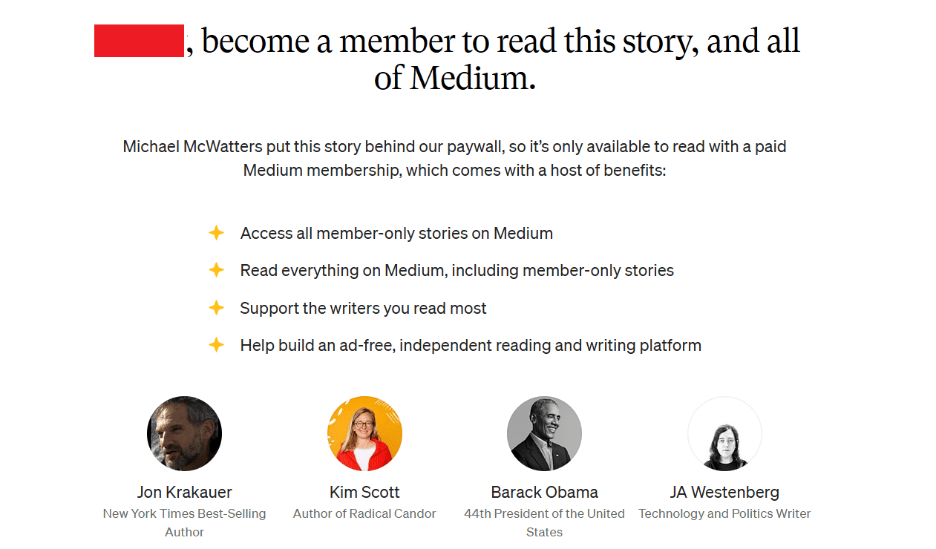
Step 10. Sell freelance services online
Your blog is like an online portfolio where you share all your skills and knowledge with anyone who comes across it. This makes it the perfect outlet to promote freelance services. Not many bloggers do this, though, as it’s a more active approach to making money than a passive blog.
If you choose to use your blog this way, remember that your content is what proves your expertise to potential clients. This credibility allows you to bypass job applications and confidently demand a higher hourly rate.
Some of the services you can offer alongside your blog include consulting services, graphic design, freelance writing, and virtual assistance. For the most part, your knowledge is all you need. However, for topics like health, psychology, and law, unless you’re a licensed professional, it’s best to steer clear.
Step 11. Sell physical products
While it’s not the most common monetization strategy, bloggers with an established reputation can make significant money by selling physical products. Think of how influencers and artists sell branded merchandise; it’s a very similar idea.
If you plan to do this, test the market first. Link a few affiliates or dropshipping products. Once you see that your blog is generating a meaningful number of sales for other businesses, you can start creating your own products.
A great way to begin is with branded merchandise like mugs or T-shirts. These can be done on a budget using the print-on-demand model to avoid upfront costs and managing inventory.
If your readers show an interest, consider creating an online store to serve as your brand’s hub for product sales.

How much money can you make blogging?
There’s no single answer to this question, but the short answer is that you can make anything from a little extra spending money to a full-time, six-figure income. How much money you make depends on your niche, your relationship with your audience, and the content you’re producing.
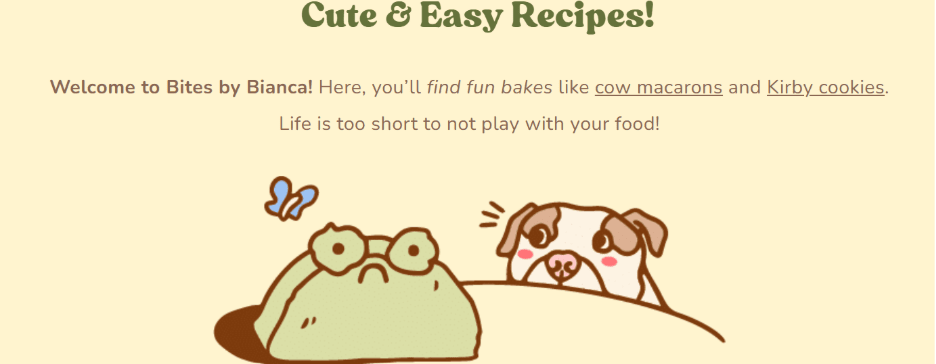
Take the journey of blogger BitesByBianca. As a food blogger, she had been blogging for two years as a hobby without making any significant income. However, by going all-in for an entire year, she was able to earn over $77,000 in diversified income, proving that perseverance can lead to a breakthrough.
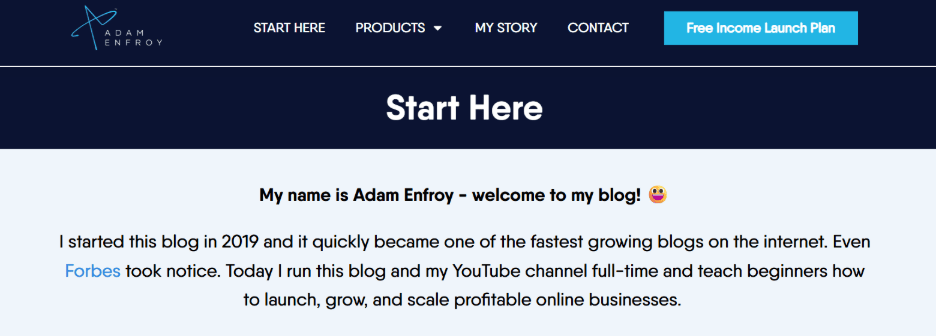
On the other hand, blogger Adam Enfroy, who had an extensive marketing background, treated his blog like a startup from day one. He focused on a rapid-growth strategy and built his business to a seven-figure income within just two years, which demonstrates what’s possible with a strong business foundation.
The key takeaways from these examples are clear. You don’t need to be a professional writer to be successful; what matters most is how invested you are and your expertise in making your blogs work for you. The most successful bloggers focus on providing value through their content and mastering skills like SEO and audience engagement to build a profitable business.
Turn your blogging passion into profit
Now that you know what it takes to make money blogging, all that’s left is for you to take action. Just as other bloggers have shown us, it’s never too late to start.
If you’re ready, we’re happy to join you in your blogging journey.
We have the tools to get you started fast. Choose from a range of stunning blog templates and easily customize your blog design with our powerful, drag-and-drop AI builder.
Take the first step toward making money from your blog and launch your site today.
Frequently asked questions
It really depends on where you’re at in your journey. While many beginner bloggers earn anywhere from $100 to $1,000 per month, experienced bloggers with established audiences and diversified income streams can earn tens of thousands of dollars a month or more.
The most profitable blogs often focus on long-standing topics where people are actively spending money. These typically include personal finance, digital marketing, health, and personal development.
Bloggers generate income through various methods, including running ads on their site, earning commissions from product recommendations as affiliates, and getting paid for brand sponsorships. They also make money by selling their own products or services, such as digital courses or consulting.
mpler monetization strategies, like affiliate marketing or selling a small digital product.
You don’t need to be an expert to start blogging. While it’s helpful to know about your topic and how to share your ideas, most successful bloggers simply start by sharing what they know and gain experience as they go.
The most important things are choosing a niche you’re passionate about and are willing to invest your time, effort, and money in.
Finding a profitable niche is about combining your interests with market demand. Look for a topic you are passionate about that also has a clear audience need and proven monetization potential.
You can find affiliate programs directly through many large eCommerce sites that sell a wide variety of products, such as Amazon, eBay, and Shopify. Affiliate networks like ShareASale and CJ Affiliate also offer different programs to choose from.
While it’s not impossible to make some money in that timeframe, it’s definitely not the norm. Most bloggers will take at least a year or two of consistent effort before they start earning a significant income.
The fastest way to monetize a new blog is by selling a high-value product or through affiliate links. You can start earning money from your very first customer or visitor, which allows you to generate income right away.
The difficulty of creating a blog depends on your topic. Some blogs, like those focused on travel or food, might involve more hands-on work and research, while others might be more about writing. Ultimately, every blog is a labor of love, but consistent effort and patience are what turn it into a profitable business.
